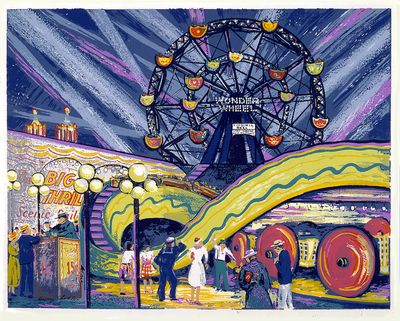Jundt’s sideshow
Latest GU art museum exhibit celebrates all things circus

The circus is coming to Gonzaga University.
No, we’re not talking the start of undergraduate classes Aug. 28. Or the first home basketball game at the Kennel later this fall.
We’re talking about “Damn Everything but the Circus,” an exhibit of prints opening at the Jundt Art Museum’s Arcade Gallery today.
The show takes its title from an e.e. cummings poem: “Damn everything but the circus/damn everything that is grim, dull/ motionless, unrisking, inward turning,/damn everything that won’t get into the/circle, that won’t enjoy, that won’t throw/its heart into the tension, surprise, fear/and delight of the circus, the round/world, the full existence.”
The show features about 20 prints by French and American artists from the Jundt’s collection, said Karen Kaiser, the museum’s interim director. Most of the images date from the 1930s and ’40s, although there are a few works from the 1950s and beyond, she said. There are wood engravings, screen prints, lithographs, a photograph and an etching.
Ferris wheels, carousels, the sideshow, clowns. They’re all featured. Some are in black and white. Others are in color. All convey a liveliness and vitality that one associates with circuses and carnivals.
The centerpiece is “L’Arlequin,” a 1972 work by Maurice Brianchon. It is a stylized portrait of a harlequin, in subtle shades of red and blue, cream and taupe.
For Kaiser, her favorite piece is a photograph. It’s a gelatin silver print of a photo called “Le Manege de Monsieur Barre,” and it depicts a very empty, very sad little merry-go-round captured during a dark, pouring rain.
“It doesn’t seem abandoned, it just looks really dreary and wet,” Kaiser said.
“There really is something magical about something like that, the carnival, the midway,” she said, pointing to a print of 1942’s “Coney Island” by American Harry Shokler. “They look really pretty.”